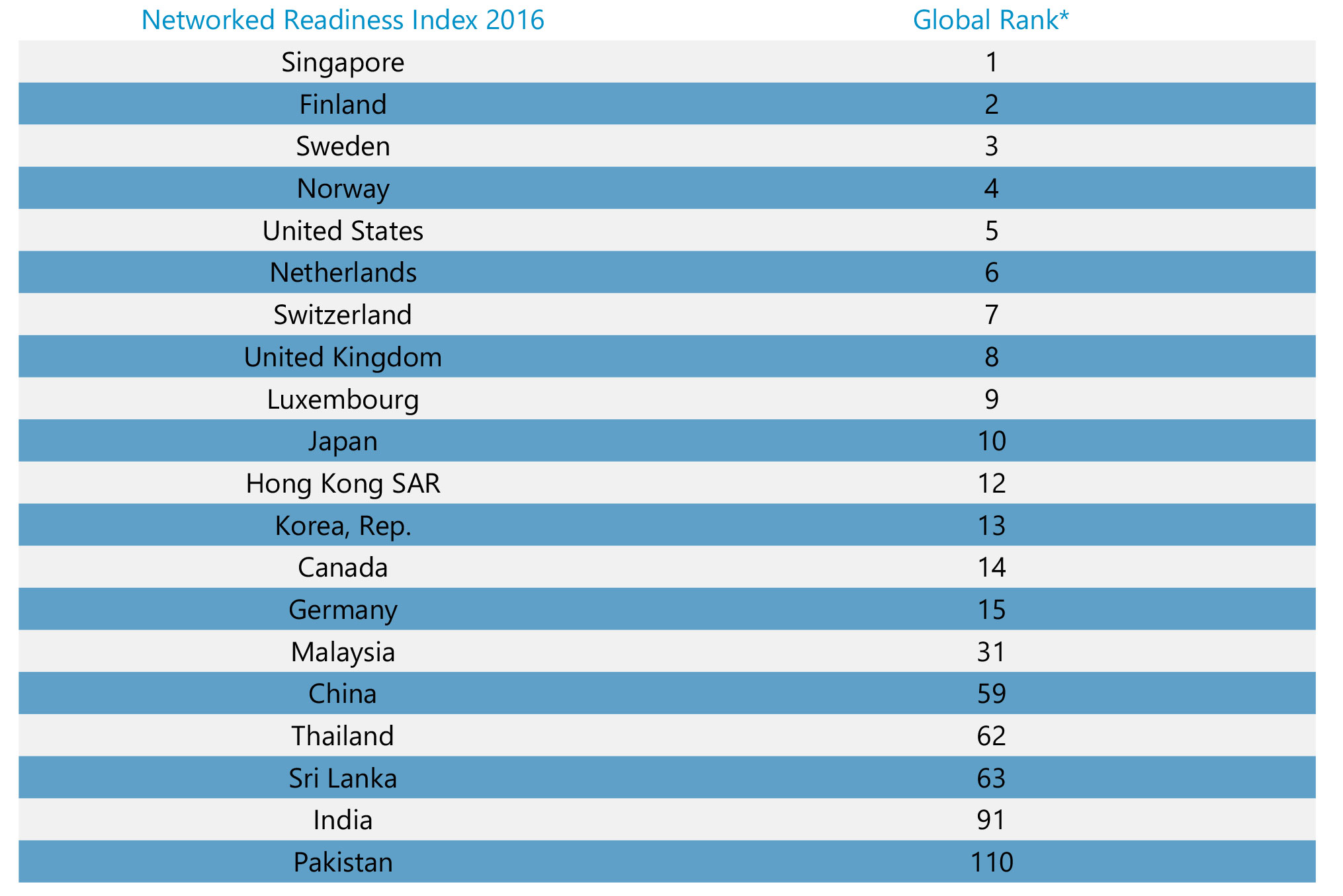The pace of growth; disruption across all major industries; and its effect on the complete structure of production, management, and governance differentiates the developments of Industry 4.0 from the earlier “industrial revolutions.”
In this era, Information and Communication Technology (ICT) is the moral fiber. The prospects of nations, industries, and individuals are determined mainly by how they adapt to the evolving digital technologies. Further, innovation in technology has brought people, businesses and countries, and on the whole the global marketplace closer than it was in the earlier times. This drift will continue undoubtedly only to speed up in the due course. But there has always been a question on how ready are the nations in adapting to this disruption.
Here is a glimpse of a holistic research by World Economic Forum (WEF) that distinguishes the espousal of Networked Readiness of different countries. Networked Readiness Index is an important pointer to learn how nations are performing in the digital world. It counts on whether a country has the right accelerators, essential for digital technologies to realize their potential, and on the actual influence of them on the financial system and the society.
Noticeably, India is at rank 91 as per the latest available Network Readiness Index report 2016, as compared to its position 61 in 2013. Whereas, Singapore, the geographically smaller nation made it to the top of the rankings for second time in a row; with US at the fifth position.
WEF studied various countries and ranked them on a seven-point scale. The important countries strapping up information technology are:
India’s Readiness for Industry 4.0

Where does India stand in terms of skills?
General education as well as vocational education lay the foundation, and have a critical role to play in growth of the economy, making employees industry-ready and the country’s overall social development.
Among the BRICS nations, India has a very low GER (Gross Enrolment Ratio) of 69% at the secondary education level. In terms of tertiary education, India along with South Africa and China accounts for almost half or below half as compared to a 60% GER in developed nations.
In regard with participation in vocational education, India accounts for only 3% of upper-secondary student enrollments. This has resulted in India posing 58% difficulty to employers midst the BRICS nations while recruiting, as compared to a 31% difficulty in South Africa and further lesser 24% with China on the global average scale.
Further, the technology advancement and progressive implementation of solutions required by Industry 4.0, the industry skill requirement is heading for a significant change. Hence, understanding the changes brought in by Industry 4.0 in today’s manufacturing setup, the innovative jobs that employees would have to do, in what way it will differ from what they have been doing and what added skills would be required for a successful career are essential. With a foresighted quest Russia, one of the BRICS nations has evolved an “Atlas of Emerging Jobs” that enlists the jobs that are to be wiped off from the jobscape, and also the newer jobs that will emerge; the Atlas also points to the various skills required for those new jobs and roles.
As we are grappling to tame Industry 4.0, the next evolution is said to have begun already. Industry 5.0 will have advanced level of automation and connectivity in manufacturing techniques. The new industry scenario will have such machines that manage the manufacturing processes themselves, on one hand, service robots teaming up with assembly workers, and smarter transport systems transporting goods on the other. Moreover, wearables and smart devices will pitch in to collect and study real-time data and information. Hence, more supervision processes will emerge in the industry, minimizing the amount of manual work done.
The ‘Future of Jobs’ survey conducted by the WEF (World Economic Forum), projects a number of skills that are not considered significant currently but will shape up to comprise a third of the preferred core skill sets of the majority professions in 2020. Therefore, such a push is predictable in terms of skill requirement with an amplified digitalization in the near future. Automation adoption and AI will wipe out the requirement of technical skills such as quality control, troubleshooting etc., and skills such as resource management, people management and time management, will be found abolished. The current requirement of technical skills will drop from 14% to 12% and resource management will see a dip to 13%, from the current 14% by 2020 predicts the WEF survey.
Hence, there is a need for quicker adoption of newer technologies into the curriculum by enhancing the collaboration with the industry. Though India is already on the path to reaping the dividends of the Industry 4.0, it requires initiating even more concerted efforts to synthesize the system to augment the growth.